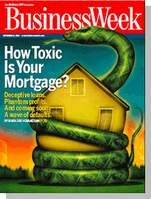Where Innovation Occurs: What the heck IS innovation in retail?
 In the course of our work, we help companies transform their results from innovation across numerous industries including high tech, industrial manufacturing, life sciences, consumer packaged goods and, of course, retail.
In the course of our work, we help companies transform their results from innovation across numerous industries including high tech, industrial manufacturing, life sciences, consumer packaged goods and, of course, retail.
It’s always interesting to observe what innovation means to senior executives across all of these industries, versus the opinion of a retail executive. For most of these industries, if you were to ask a senior executive, “What does innovation mean in your industry?†his or her first reaction would be to think of innovation as it relates to products they develop.
Interestingly, if you were to pose the same question to a senior retail executive, his or her first reaction would be to think of innovation as it relates to the customer’s experience with their company.
As a result of this dichotomy, there can be confusion as to what innovation means in retail. Here’s how we think about where innovation occurs in retail, and what’s driving it.
Where Innovation Occurs
It all comes back to the most basic definition of innovation – something new that creates value for the customer that wasn’t there before. For retailers, there are three primary areas where innovation happens: merchandise/product, consumer/customer experience, and business model & process. The leading retailers are constantly trying new things across these all of these areas, versus just focusing on one.
Merchandise/Product Innovation – This refers to new or differentiated products or brands. When retailers struggle with limited product differentiation,not enough new business from new products, or poor consumer acceptance of new products, merchandise innovation is the common solution. We see merchandise innovation happening in different ways within the retail environment. Particularly for vertically-integrated retailers or those with their own brands, retailers may innovate in the design of the product itself, the materials, or the packaging.
Retailers may also bring together multiple products to create an innovative solution that satisfies an unmet customer need. Another manifestation of merchandise innovation in retail is partnering with a 3rd party (e.g., celebrity, national brand) to bring exclusive brands or products to market.
| Innovation Areas | Description | Examples |
|---|---|---|
| Product Design | Innovation in the design of the product or materials to improve product performance through new, different, or improved features or functions | Uniqlo’s HeatTech |
| Packaging | Innovation in the packaging to enhance features, function, or performance | Target’s redesign of the Rx pill bottle |
| Solution | An innovative product solution that meets a customer unmet need and results from bringing together multiple products | Mix & Match CreationsTM – a set of solutions from Walmart, Tysons and Birds-eye |
| Exclusive Merchandise | Exclusive brands or merchandise through collaboration with a vendor or 3rd party (e.g., designer or celebrity) | C9 by Champion for Target |
| High Priority Issues Addressed |
|---|
| LImited product differentiation Not enough new business from new products Poor consumer acceptance of new products |
Customer/Consumer Experience Innovation – This refers to new or differentiated ways that the retailer engages with and delights the shopper across all touch points. Traditional retailers (those who are not vertically integrated) tend to refer to a shopper in their store as the “customer.â€Â However, for vertically-integrated retailers who are also apparel manufacturers, the “customers†are the retailers through which their products are distributed, so they instead think of their shopper as the “consumer.†Thus, to be all encompassing, we refer to this form of innovation as “customer/consumer experience.†Either way, it’s all about the experience of the person shopping for and buying the merchandise.
This type of innovation addresses customer/consumer engagement and loyalty. It tends to be the area that gets the most air time when retailers talk about what they are doing in innovation, as any innovation in this area is very visible to the outside world. Many of the digital and multi-channel initiatives that retailers are currently undertaking fall into this category. Even if retailers aren’t calling it customer or consumer experience innovation, it really is all about finding new ways to add value to the customer’s experience.
|
Innovation Areas
|
Description | Examples |
|---|---|---|
| Service | Providing a new or differentiated service that goes beyond the product | Ikea’s augmented reality catalog app |
| Ways to shop | Providing the customer new, innovative ways to shop for the merchandise they want, when they want it | Tesco’s virtual shopping wall |
| Communication | Communicating the brand value in a differentiated or unique way | Nordstrom’s Pinterest signage |
| Engagement | Finding new, innovative ways to connect directly with the customer | Macy’s use of ShopBeacon |
| High Priority Issues Addressed |
|---|
| Low customer loyalty Low customer engagement |
Business Model & Process Innovation – This refers to new or differentiated ways that the retailer configures their assets to do the work and serve the customer. Retailers turn to this type of innovation when assets are underutilized, the supply chain gets in the way of innovation, or capabilities are lacking. This category includes things like building alternative business models, collaborating with others in new ways, reorganizing, or improving how you operate.
| Innovation Areas | Description | Examples |
|---|---|---|
| Business Model | Building a new, alternative business model – many times this is applying a known model to a new situation | Warby Parker’s online sales of prescription eyeglasses |
| Business Collaboration | Collaborating with others in a new way for the mutual benefit of both | eBay “Sell it Forward†beta test with Goodwill of San Francisco |
| Business Approach | Deriving value from a new way to organize intangible assets, capital and people | Stitch Fix’s use of data analytics and personal stylists |
| Business Process | Improving processes, company infrastructure, supply chain and/or assets – these tend to be more operational in nature | Kroger’s use of infrared technology to monitor customer queue time |
| High Priority Issues Addressed |
|---|
| Underutilizing company’s assets Supply chain gets in the way of innovation Missing capabilities required to meet a market need |
Additional examples of all types of innovation can be found in the Retail Innovation Shout-Out Blog.
What’s Driving Innovation
The fuel for these three types of retail innovation includes the use of a number of readily available and well understood tools, technologies and techniques. Although retailers have a reputation for being late adopters, in many cases they have been at the forefront of experimenting with and adopting the following sources of innovation:
- Social Media – to rapidly share information and gain market feedback
- Cloud – to access data independent of any device
- Big Data – to inexpensively store and access large amounts of complex data
- Advanced Analytics – to break down data sets using advanced, cost effective, accessible technologic horsepower
- Digitization – to depict any merchandise with digital photography and video
- Mobility – to take advantage of how consumers use technology on the go
- Band Width – to move large amounts of data swiftly and cost effectively
- Advanced Search – to search a vast amounts of data and compare like data sets
While this is not a mutually exclusive, collectively exhaustive list, these sources are applied individually and in combination to drive innovation for retailers.
What’s Your View?
How do you define innovation? What other examples do you have relating to merchandise/product, consumer/customer experience and business model/process innovations? What sources do you use?
image credit: linkedin.com
Wait! Before you go…
Choose how you want the latest innovation content delivered to you:
 Steve Riordan is a Partner at Kalypso and serves as the firm’s overall retail practice leader. Kalypso services encompass overall innovation strategy, merchandise and product strategy, new product development, the front end of innovation, portfolio and pipeline management, business intelligence and innovation analytics, as well as, product lifecycle management (PLM) systems selection and implementation.
Steve Riordan is a Partner at Kalypso and serves as the firm’s overall retail practice leader. Kalypso services encompass overall innovation strategy, merchandise and product strategy, new product development, the front end of innovation, portfolio and pipeline management, business intelligence and innovation analytics, as well as, product lifecycle management (PLM) systems selection and implementation.
NEVER MISS ANOTHER NEWSLETTER!
LATEST BLOGS
iPhone Followup – Innovation in a Box
My initial iPhone article highlighted why the iPhone will not be a success in its first incarnation. Make no mistake though, the introduction of the iPhone will revolutionize the mobile telephony market. Let’s answer some of the criticisms of the most innovative mobile handset in the history of mobile telephony:
Read MoreThe Growing Housing Divide
I was speaking with a friend of mine recently and he brought up an interesting point. He asserted that there was a widening gap in home prices between where people want to live and where people have to live. How else can you explain the housing price fall in most of the country while places like Seattle continue to have rising prices?
Read More



